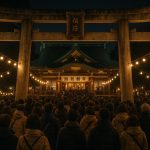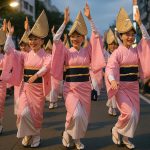Introduction to Kinkaku-ji
Kinkaku-ji, or the Golden Pavilion, stands as one of the most iconic and visually stunning structures in Kyoto, Japan. This Zen Buddhist temple, officially referred to as Rokuon-ji, is celebrated for its exquisite architectural design and the serene beauty of its surrounding landscape. As part of a temple complex, Kinkaku-ji offers insights into the rich history and culture of Japan, allowing visitors to immerse themselves in a unique historical environment.
History of Kinkaku-ji
The inception of Kinkaku-ji dates back to the late 14th century when it was originally built with the intent of serving as a retirement villa for Shogun Ashikaga Yasashimazu. After his demise, in accordance with his wishes, the villa was transformed into a Zen temple. Over the years, Kinkaku-ji has faced multiple reconstructions to preserve its grandeur. The most notable reconstruction occurred in 1955, following a devastating fire in 1950, which led to significant developments in the modern-day structure that tourists admire today.
Architecture and Design
The architecture of Kinkaku-ji is a masterpiece that commands admiration and draws tourists from all over the world. Its exterior is lavishly adorned with gold leaf, which not only contributes to its name—the Golden Pavilion—but also reflects elegantly in the Mirror Pond that lies below, creating a breathtaking sight. The pavilion itself is thoughtfully constructed over three distinct levels, each floor embodying a unique architectural style which adds to the temple’s overall historical and cultural significance.
The first floor, known as the Chamber of Dharmakaya, is constructed in the Shinden style common to traditional palace architecture, providing a sense of openness and fluidity. The second floor transitions into a Buke-zukuri design, which is typically associated with the residences of samurai, thereby offering glimpses into the living quarters of historical Japanese nobility. The third and final floor is an example of a Zen-influenced architectural style called Kukyo-cho, or the Cupola of the Ultimate. This tier of the pavilion is comprehensive in its embodiment of Zen philosophies through its design principles.
Adding further to the majestic design is a gold phoenix statue perched atop the pavilion, symbolizing rebirth and tranquility, all encapsulated within traditional Japanese craftsmanship.
The Surrounding Gardens
The gardens that envelop Kinkaku-ji are not simply a complement to the temple structure but are themselves esteemed as a National Special Historic Site and National Special Landscape. The garden design mirrors the aesthetics celebrated in traditional Japanese landscaping, blending harmoniously with the natural surroundings. As visitors journey through the gardens, they encounter a carefully curated ensemble of elements including artistically placed stones, tranquil ponds, and native vegetation. These gardens offer picturesque views that change splendidly with the seasons—whether it’s the lush greenery of spring and summer, the profound hues of autumn leaves, or the tranquil blanket of winter snow.
Visiting Kinkaku-ji
Located in the northern part of Kyoto, Kinkaku-ji is easily accessible for visitors, requiring only a short commute from the city center via public transportation. The temple welcomes guests throughout the year, operating daily from 9:00 AM to 5:00 PM. Visitors should take note that an admission fee is required for entry. To enhance the experience, guided tours are available that provide in-depth knowledge about the temple’s history, architecture, and cultural relevance—offering a deeper appreciation for its timeless allure. For extensive travel information, prospective visitors can explore resources provided by travel sites such as Japan Travel.
Visiting Kinkaku-ji presents an enriching opportunity to explore a harmonious blend of architectural marvel and serene natural beauty. It serves as a quintessential embodiment of Japan’s cultural heritage, offering invaluable insights into a world where aesthetics and spirituality converge seamlessly. By traversing the temple grounds and its gardens, one gains a profound understanding of Zen philosophy and the historic significance that this site continues to hold in Japan.
Kinkaku-ji is more than an architectural wonder; it is a tangible link to Japan’s illustrious past, showcasing exquisite craftsmanship, deep-rooted traditions, and the enduring impact of Zen Buddhist ideology. Exploring Kinkaku-ji allows visitors to connect with a part of Kyoto’s and Japan’s historical timeline, offering a rare glimpse into cultural practices that have shaped modern understanding of aesthetics and spirituality in Japanese society. The Golden Pavilion thus stands as a timeless testament to the sophisticated artistry and cultural wealth that flourished during Japan’s historical epochs and continues to inspire admiration and respect throughout the world today.













